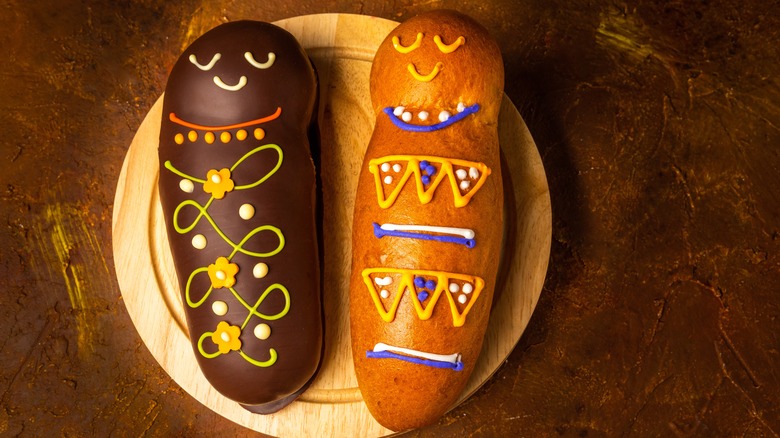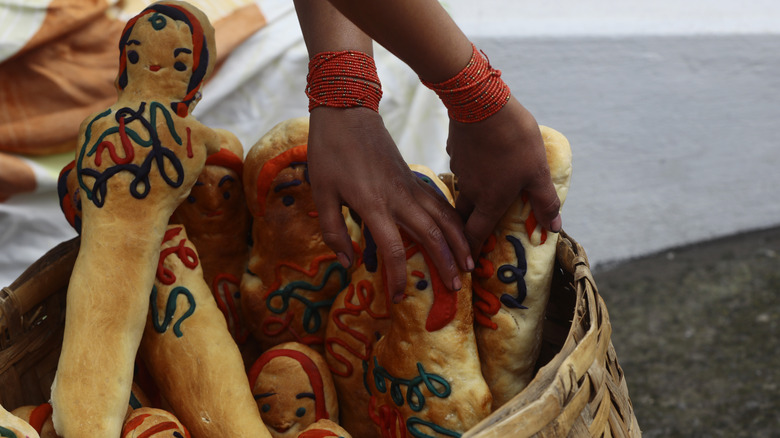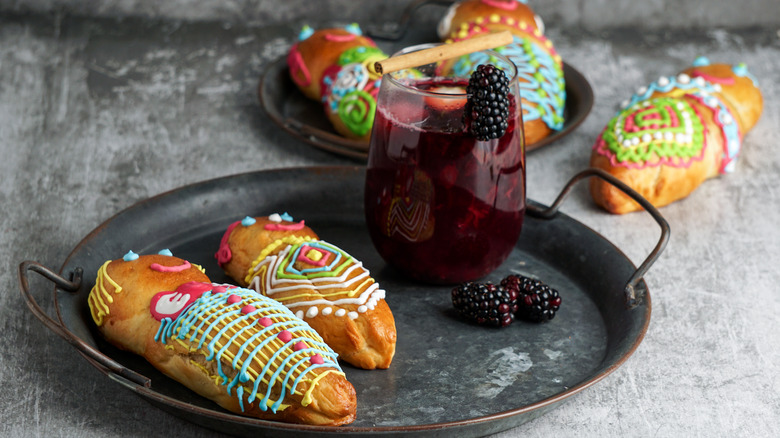Guaguas De Pan: The 'Bread Babies' Customary For Día De Los Difuntos
Throughout Latin America, November 1st and 2nd are celebrated to honor and reflect on loved ones who have passed away. The rituals, foods, and traditions typically combine a range of cultural influences, from indigenous beliefs to the traditions of the people who later settled and colonized these lands. November 1st is typically observed by Christians as All Saints' Day, a time when those who have arrived in heaven are remembered, according to Britannica. Similarly, Mexico celebrates Día de los Muertos, or Day of the Dead, on November 1st and 2nd. During this time, the spirits of ancestors return to the world to spend time with families, and decorations and refreshments are made to welcome and pay tribute to the visiting family members (via Mexican Museum).
Ecuador, similar to Mexico with its history of Pre-Columbian indigenous peoples whose beliefs and customs intertwined with those of Spanish colonizers, has an analogous celebration on November 2nd, called Día de los Difuntos, or Day of the Deceased, per The Culture Trip. On November 2, families gather in cemeteries to honor and remember their loved ones who have passed on. While Mexico's Día de los Muertos may be known for its now-commercialized sugar skulls and pan de muerto, Ecuador has its own food traditions associated with Día de los Difuntos.
What are guaguas de pan?
Guaguas, in the native Quechua language, mean babies, according to Laylita's Recipes. Guaguas de pan, then, are little baked breads shaped and decorated like dolls. Not Your Average American explains that the practice of baking these little human-shaped breads predates the arrival of the Spanish in Ecuador, and has now been incorporated into Día de los Difuntos traditions.
While in cities, guaguas de pan tend to be sweet and purchased from stores and bakeries, the bread in smaller communities tends to be more rustic and baked at home, sometimes even in communal ovens. Some of the breads aren't even intended to be eaten, rather they're destined to be placed atop graves in cemeteries as an offering to the dead.
Guaguas de pan are bright and colorful when they're finished. Amigo Foods notes that the bread babies are often decorated with piped-on colored icing or with bits of dough that have been colored. The dough for guaguas is sweetened and contains yeast, and the process of making, kneading, shaping, baking, and decorating the bread babies is time-consuming, a labor of love intended to honor one's ancestors.
Día de los Difuntos celebrations
Cemeteries are festive places during celebrations for Día de los Difuntos, explains NPR. Families bring or purchase their guaguas de pan from vendors set up right outside cemeteries and eat them on site, along with a traditional drink called colada morada. Colada morada is bright purple in color, a hue attained by using "blue or black corn flour, Andean blackberries, pineapple rinds, and exotic fruits: tiny sour blueberries called mortiños, a citrusy native fruit called naranjilla, and babaco, a cousin of the papaya," notes NPR.
The reason guaguas de pan are eaten for Día de los Difuntos is explained in several ways. According to Amigo Foods, the bread babies represent the deceased, and they're eaten as a way to remember loved ones that have passed on. Others believe the guaguas stand for a childlike innocence recovered as a soul passes from this life to the afterlife.
NPR explains that the head of the guaguas de pan is dipped into colado morada, then eaten as a way to symbolically evict bad thoughts. Laylita describes the tradition of baking guaguas de pan as one that has been handed down through generations and one in which mothers and children together create these baked remembrances of family members from the past.


